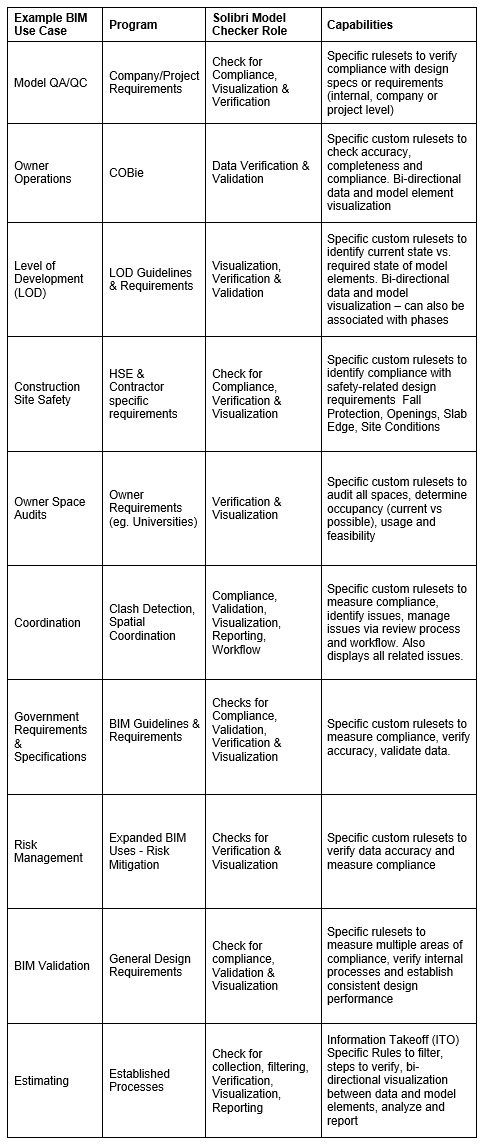This is a short exploration of what is happening in the BIM community and how the continuous identification of new BIM use cases should be considered when exploring potential solutions and evaluating how you apply QA/QC to your BIM processes. It is also a chance to share a different perspective with you, with regard to the Solibri Model Checker. You might be surprised.
BIM is growing, there are millions of models in circulation already and more being authored every day, on a global basis. However, there is some debate whether all, or even the majority of these, are actually Building Information Models or just models. That discussion we can leave for another time as the focus of this piece is to address the evolution of the BIM Use Case.
This is not really new, as there have been some extremely knowledgeable people and forward thinking companies over the years who identified that BIM could be used for many different purposes and to accomplish this, there had to be some consensus on what information needed to accompany the model components. There are some great examples of these use cases, such as Energy Analysis, Acoustic Analysis, Facilities Management, Level of Development, QA/QC, National BIM Standards, Code Compliance and many more. This has also resulted in some excellent initiatives to define and deliver a common data structure to address the needs of the different project owners.
Solibri Model Checker is indeed different as it truly is a solution for multiple BIM Use Cases, by design and not by “stretching” the technology to “kind of” address a need, but by actually being an excellent solution for very real use cases and flexible enough to adapt as requirements increase.
The one thing that is very clear – now that there is more data present in models, there is a very real requirement that is often ignored, to both manage that data, but also to verify and validate it, as well.
What good is data if you don’t know it’s accuracy, completeness, or compliance with an established requirement?
Bad data actually causes more harm than good, as decisions that are made from unchecked or unverified data will result in inaccuracies elsewhere, as the project progresses (estimating, procurement, delays, field changes, etc.). This of course adds time and cost and introduces more risk.
Each BIM Use Case presents a range of very different requirements. However, a common need is that they all need to verify and validate the data, for that particular requirement. The table below demonstrates just a few of the use cases that have been identified, so far. This is not an all-inclusive listing, nor does it mean that models are already being used for all of these, everywhere. But the potential is there already for this to happen.

Again, this is not an all-inclusive listing, but these are all legitimate BIM Use Cases that may, or may not even be known by the design team at the beginning of a project. The point is, Solibri Model Checker provides an extremely powerful and capable solution within its “core capabilities”.
There are numerous software applications (paid for and free) that can “find a clash”, or even prevent a clash. As an industry we spend so much money on coordinating trades from a spatial perspective, so shouldn’t the data coordination be given equal importance?
Solibri Model Checker can guide you from design through operations for the life cycle of a building, with the ability to define custom checks, then run those checks with consistency, to measure a wide range of behaviors. These checks are not only limited to geometry but also able to make use of spatial information in the model which is critical for many of the checks that are required.
Solibri Model Checker forms a ‘bridge’ between:
Design > Review (for planning, compliance with codes, requirements or regulations)
Design > Construct (checks done prior to construction to ensure model quality and integrity)
Construct > Operate (spaces and their associated requirements and behavior are defined)
Solibri does the one thing that every model needs…it allows you to measure the quality of what has been modelled geometrically, but also to measure the quality of the data that accompanies each model object. BIM is not able to deliver on its promise, if the data is of poor quality. It really is that simple.
For more information, visit www.solibri.com













